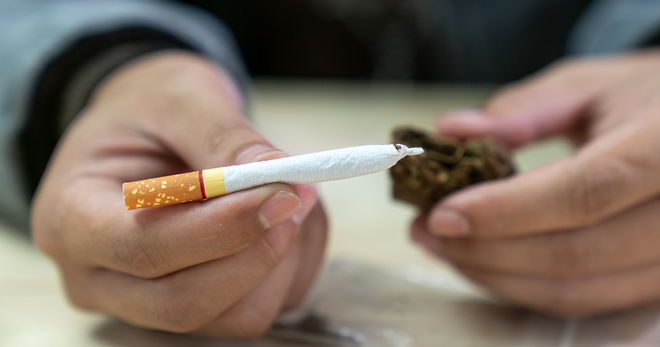Two new grants explore tobacco and marijuana use and the appeal of flavored tobacco
Researchers at the Schroeder Institute for Tobacco Research and Policy Studies at Truth Initiative received grants for two projects from the National Institutes of Health to study tobacco use behavior among young adults.
Dr. Amy Cohn of the Schroeder Institute® will serve as principal investigator for both two-year projects; one funded by the National Institute on Drug Abuse and the other funded by the FDA Center for Tobacco Products and the National Institute on Drug Abuse.
The first project will examine how marijuana and tobacco products are used together among young adults (ages 18 to 24) in Washington, D.C. and how harm perceptions of marijuana impact future use of both products.
Young adults are increasingly using tobacco products and marijuana together. Findings from the study will support a future project that will identify how different “corrective” messages about the harms associated with marijuana and tobacco co-use among young adults might impact (increase or decrease) tobacco and marijuana use in this age group.
The second project will explore how the characteristics of flavored tobacco products enhance appeal and attractiveness, increase curiosity and facilitate initiation and use in young adult never and current tobacco users.
80%
80 percent of youth tobacco users used a flavored product in the past 30 days
A recent national study showed that 80 percent of youth tobacco users used a flavored product in the past 30 days. The variety of flavors like grape, cherry and mint/menthol in tobacco products such as cigars, hookah and e-cigarettes contribute to the perception that flavored tobacco products are safer and less harmful than products without these characterizing flavors. Findings from this study will provide data to inform FDA’s regulation of flavored tobacco products.
Check out a Truth Initiative® web presentation, “Youth and Young Adult Tobacco Use Trends: What We Know and What It Means,” to learn more about how this generation of youth and young adults think about tobacco and their tobacco use behaviors.
More in substance use
Want support quitting? Join EX Program
By clicking JOIN, you agree to the Terms, Text Message Terms and Privacy Policy.
Msg&Data rates may apply; msgs are automated.


